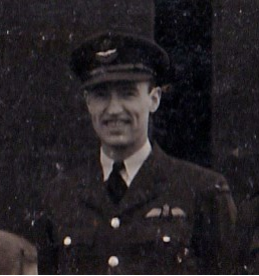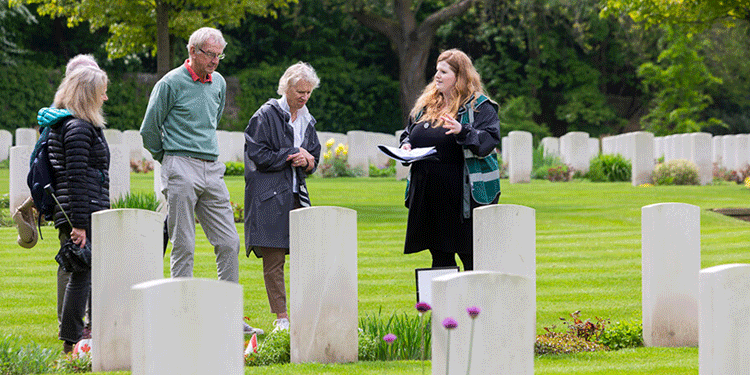
F/Lt. J21121 Wilbert Arley Healey DFC RCAF was born 24th December, 1914 at Parry Sound, Ontario, one of nine children, the son of Henry Alexander Healey (1872 to 1973) and Abigail Jane Toffey (1875 to 1957).
The 1921 records him as of Irish extraction as his father, a railway platelayer, was born there. By religion, the family were Methodist.
Wilbert filled in his enlistment form on the 22nd of October 1941, whilst resident at 322 St George Street, Toronto, although his permanent address was at Parry Sound, Ontario.
From leaving Toronto University in 1934 to 1936 he was employed in “odd jobs” before becoming a miner, slope boss and shovel boss with the International Nickel Company before leaving in 1941 as he was “dissatisfied”. He played tennis and basketball. His medical went well - he was 6ft tall, with his only “abnormality” being flat feet. He was accepted for enlistment as an AC2 on the 11th of November.
Wilbert achieved his Pilots flying badge on the 20th November 1942 when he was accepted for a commission as a Flight Lieutenant. He was then granted embarkation leave until the 5th of December. Further flying and conversion training took place in the UK, leading to conversion to fly the Avro Lancaster.
On the 30th of November 1943 he was posted to 49 Squadron to commence his operational flying.
On the 19th of February 1944 he set out for Leipzig in Lancaster JB679 “D”. At 02.01, flying at 21,000 feet, the the Lancaster crew felt a jolt and looking out Wilbert briefly saw a Ju88 nightfighter sitting just off his port main plane. Within seconds the German dived away, having knocked ten feet off of the Lancaster’s wing tip. The enemy fighter was seen to crash in flames.
However, the crew were still in trouble as the Lancaster began to lose height rapidly in a spiral dive. With great effort, the aircraft was brought back on an even keel, although it now had only three engines running. The flight back to Fiskerton was achieved only with difficulty to land back at 03.39. A daylight inspection revealed that the “Lanc” was severely damaged. As well as the lost wing tip, the port outer engine was pushed askew and the airscrew “bent beyond redemption”.
For his show of airmanship, F/Lt Healey was gazetted with the DFC.
On the 10th of April, 1944, having flown twenty four operational sorties with 49 Squadron, he was posted on detachment to the Bomber Development Unit at Gransden Lodge.
On the 30th of April, 1944, he and his crew took off in Lancaster ND553 flown by F/Lt Healey, to test a new type of radar operated gun turret, code named “Village Inn”. The flight would involve a fighter affiliation exercise, involving mock combat. During this exercise, Flight Lieutenant Healey took violent evasive action, during which the dinghy, located in the starboard wing, accidentally started to inflate and came out of its housing and fouled the tailplane, causing the Lancaster to flick onto its back and crash at Witchford, near Ely, Cambridgeshire with the loss of all on board. The time was 16.55 hours.
The crew were:-
F/Lt. J21121 Wilbert Arley Healey DFC RCAF, Pilot, attached from 49 Squadron.
F/O. 152530 R.Bailes RAFVR, Navigator, attached from 460 Squadron.
Sgt 1813576 F.Boardman RAFVR, Flight Engineer, attached from 460 Squadron.
Sgt 1332717 J. Jones RAFVR, Wireless Operator, attached from 460 Squadron
Sgt 1802804 T.A.Hutchison RAFVR Air Gunner, attached from 460 Squadron.
F/Lt. A405246 J.A Kirby DFM RAAF, Air Gunner, attached from 460 Squadron.
F/O. 171172 B.Jagger DFM RAFVR, Air Gunner, on Strength of the Bomber Development Unit at Gransden Lodge. This man had been a front gunner in the crew of F/Lt D Shannon on the Dambusters Raid.
Wilbert Healey is buried in Cambridge City Cemetery

